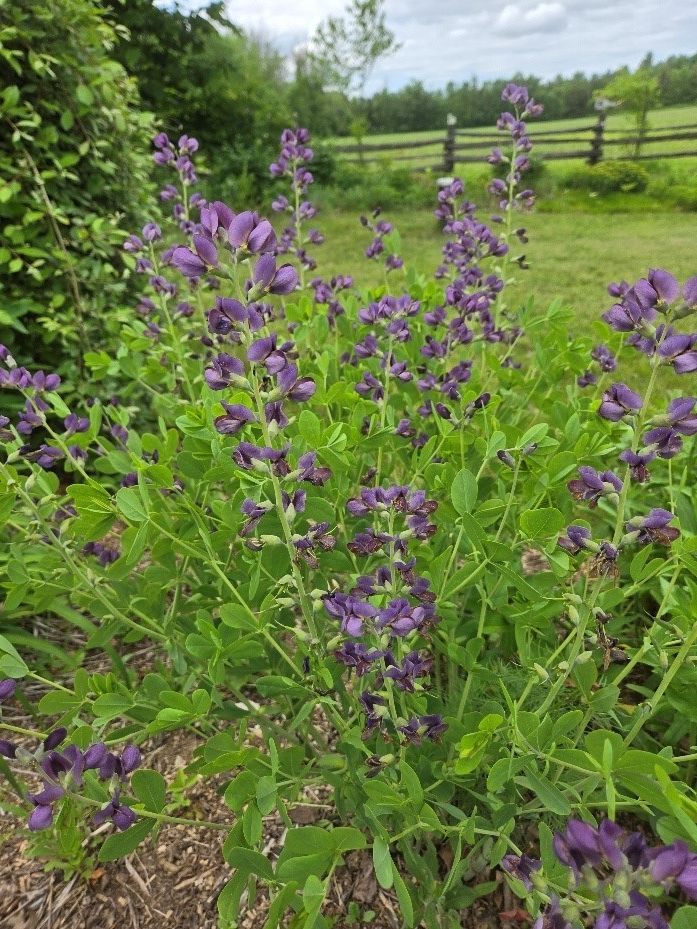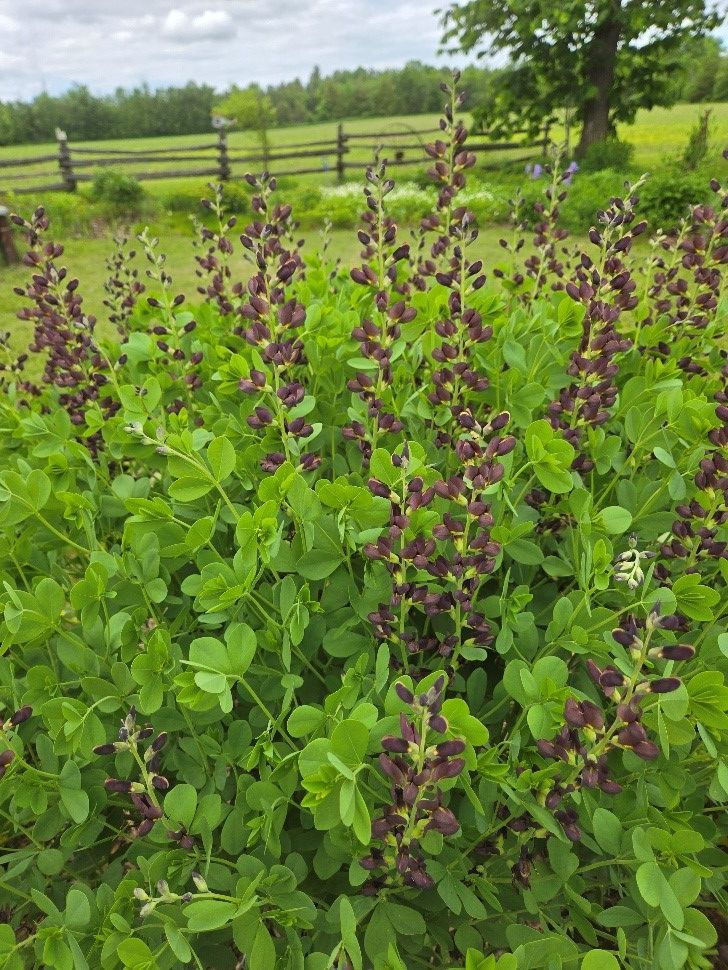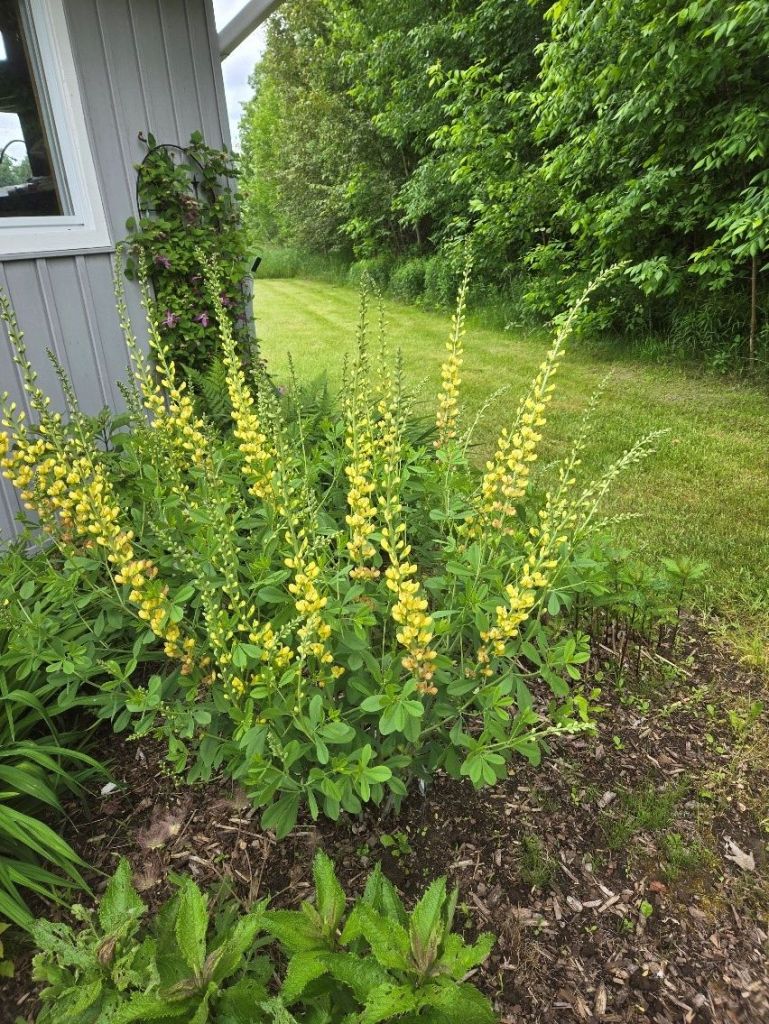By Cheryl Harrison, Master Gardener
Baptisia species are part of the pea, or legume, family (Fabaceae) of plants. The folks who develop new plants have been working on Baptisia for a few years. The old reliable B. australis, with its pretty blue flowers, is still very available but the new hybrids feature various different flower colours.
As expected with all members of the pea family, Baptisia host rhizobia bacteria on root nodules. These bacteria are able to take nitrogen from the air and convert it to a form that is usable by the plant. This is called nitrogen fixation. Nitrogen is a necessary nutrient for most plants.
Baptisia prefers full sun but will grow in part shade and may reach .5-1.5 Metres (2-4 ft.) high and will die back to the ground in fall after a hard frost. They prefer moist, well-drained soil and are drought tolerant. All my Baptisia grow well in our zone 4-5 garden. Baptisia spread by seeds which are pea/bean-like and form in pods. The dry seeds rattle in the pods in the fall winds and if you brush against the plant….this makes an unusual sound in the garden. You can prune the plant after flowering to help maintain a more rounded form but you will lose those interesting seed pods! My plants do not flop but you may wish to add some support if needed. The numerous, and gorgeous, flower blooms are lined up along the tall stems in late spring to early summer. Once the flowers are done, this shrub-like herbaceous perennial will still look good in your garden with its lush green foliage and attractive seed pods. For more information, check out this “Baptisia Plant Guide”.
Bonus….this plant is deer and rabbit resistant. We have at least one resident rabbit and the odd deer passing through, but I have never seen any foraging damage on my Baptisia plants. However, they are attractive to bees and butterflies.
Baptisia australis, wild/blue false indigo, are native to the eastern half of the U.S. although it has become naturalized in Ontario. The old common name wild/blue false indigo refers to the plant’s use in the southern states as a substitute for the dye indigo during the 18th century. As mentioned, this plant has blue flowers.

Baptisia hybrid ‘Dark Chocolate’ is one that I have in my garden. It has all of the usual Baptisia characteristics with the addition of dark brown flower blooms. That may sound odd but they really are quite attractive. Mine is growing beside a garden path so that a garden visitor can have a close look when strolling by.

Another Baptisia hybrid is ‘Lemon Meringue’. This one, as you likely can guess, has yellow flowers. It too has the typical Baptisia look.

Baptisia flowers also come in white, lavender and purple…..I hope to collect them all. With its eye-catching presence, a Baptisia would make a great specimen plant in anyone’s garden!
